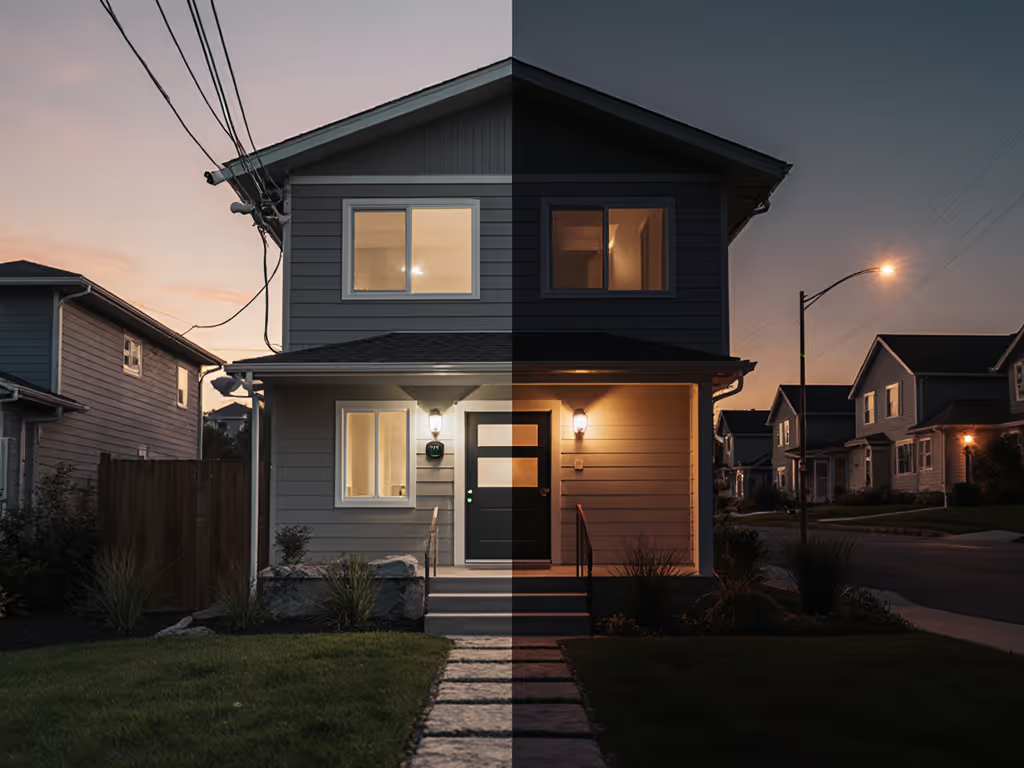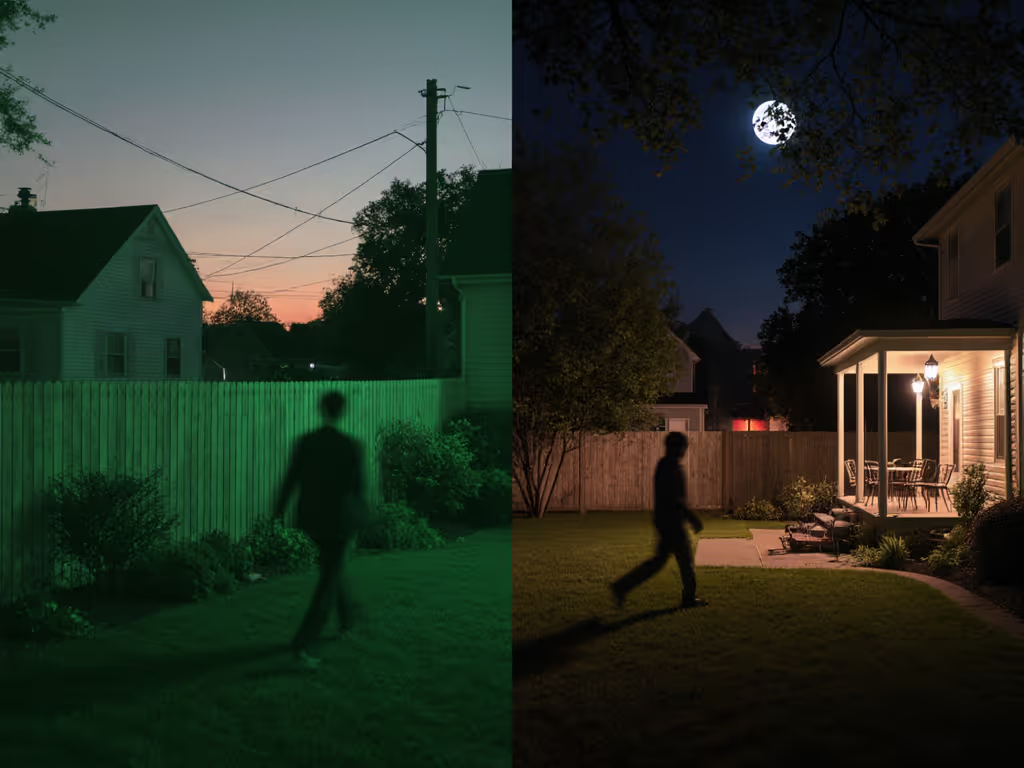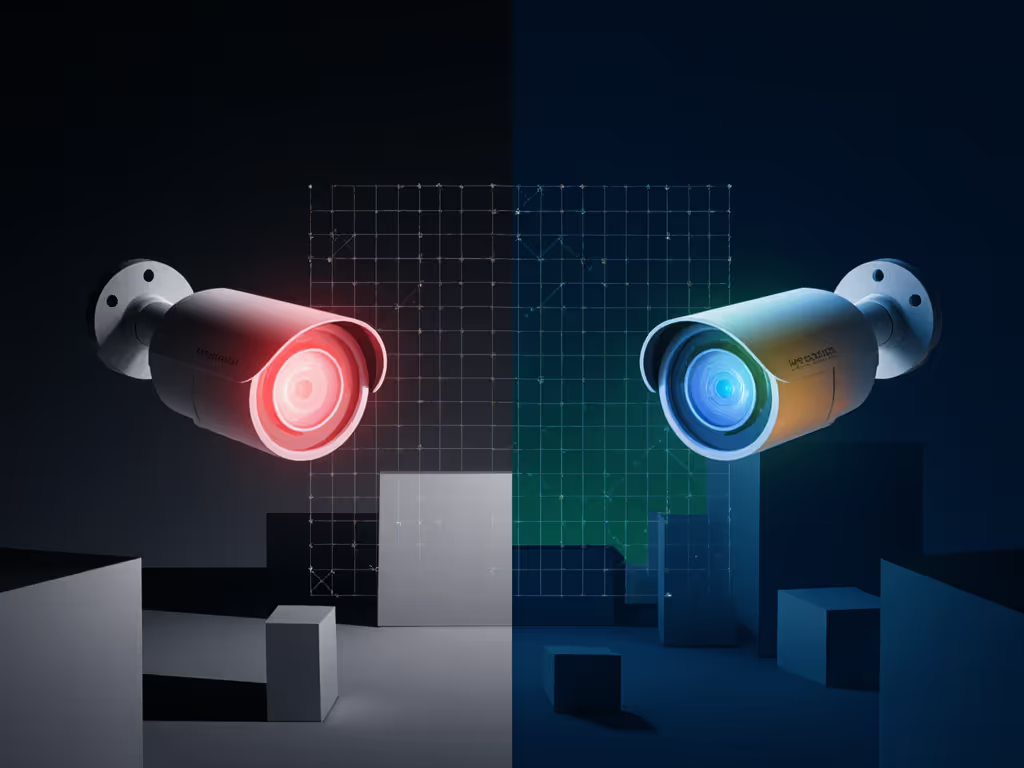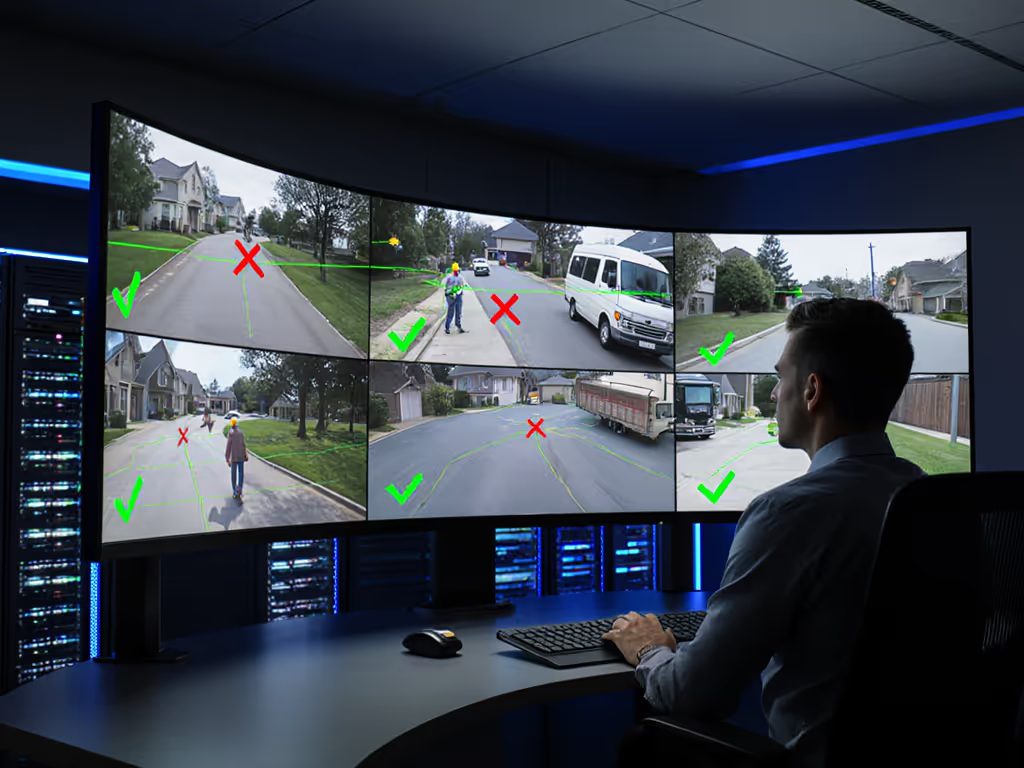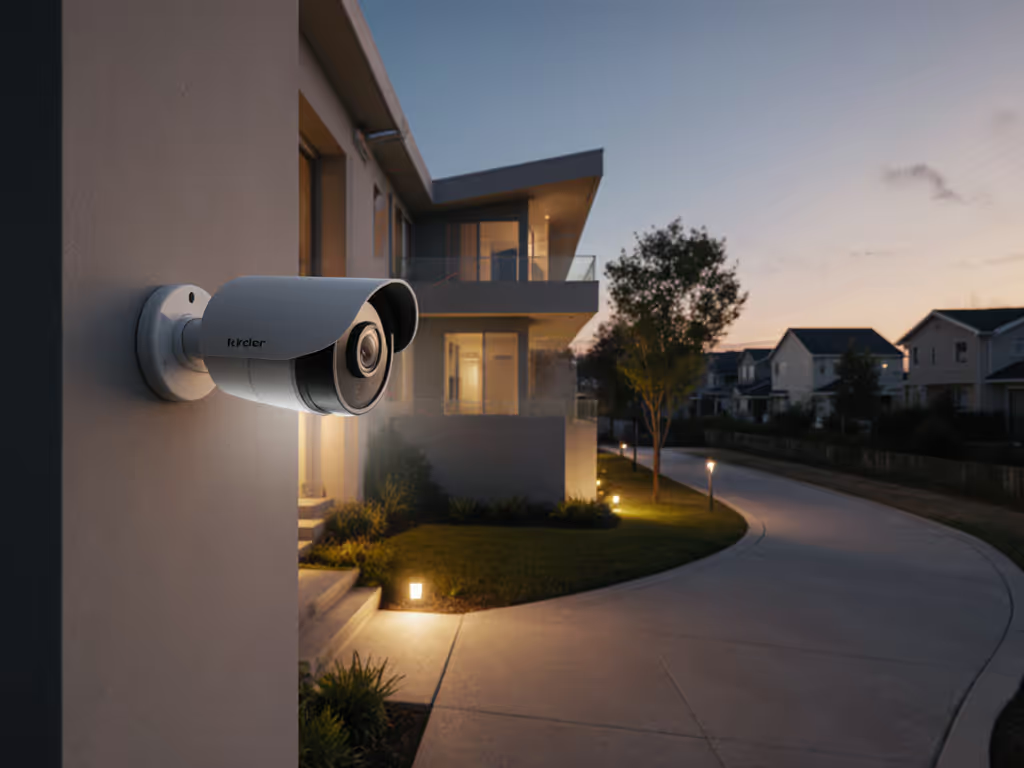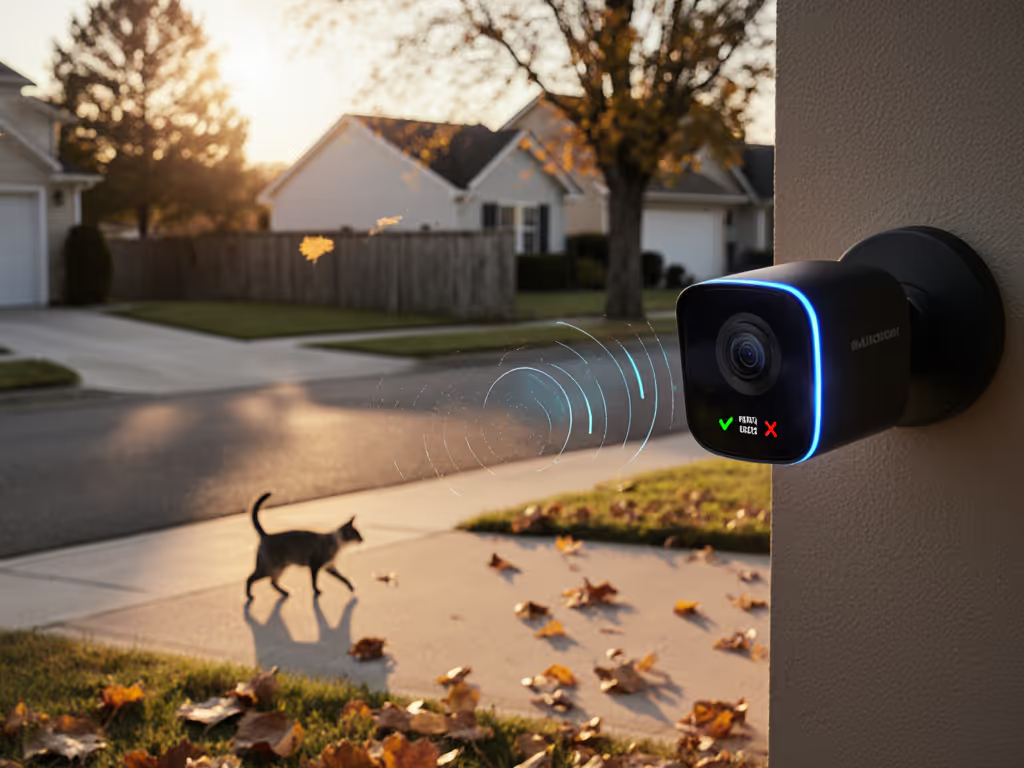When your neighbor's doorbell footage of our street ended up in a viral group (faces and license plates exposed without malice, just frictionless sharing), I realized how critical it is to understand what your outdoor security camera's night vision actually captures. This night vision comparison isn't about marketing hype, but about evidence you can actually use when it matters most. I've designed systems where privacy and reliability work together because when things go wrong, having control over your footage isn't just nice, it's essential.
Understanding Your Night Vision Needs: An FAQ Deep Dive
What actually happens in low-light conditions? Why can't my camera just "see" like my eyes?
Your eyes have rods and cones that adjust to darkness over time (a process called dark adaptation). Cameras don't have this biological flexibility. Instead, they use either IR illumination (invisible light that bounces off objects) or color night vision (amplifying available light). The critical distinction isn't technological superiority, it's contextual suitability.
Consider this threat-model framing: At 1.2 lux (roughly the light from a full moon), a camera with color night vision might produce recognizable facial features but struggle with motion. Meanwhile, an IR camera creates a monochrome image that handles movement better but loses color information. This explains why many "best outdoor night vision security cameras" fail when users don't match technology to their specific environment.
Collect less, control more; privacy is resilience when things go wrong.
How do I choose between IR vs color night vision? What are the real-world trade-offs?
Principle-based guidance starts with defining your evidence threshold: What detail must you capture to feel secure? For license plate identification at 50 feet, you need at least 100 pixels across the plate, requiring 4K resolution in true darkness. For general presence detection, 1080p with proper IR illumination suffices.
IR Night Vision:
- Works in pitch-black conditions (0 lux)
- Struggles with reflective surfaces (windows, wet pavement)
- Creates monochrome footage (no color differentiation)
- IR reflection can wash out close subjects (within 15 feet)
Color Night Vision:
- Requires some ambient light (minimum 0.1 lux)
- Preserves clothing/vehicle colors critical for identification
- Longer exposure times cause motion blur in moving subjects
- Often has narrower effective range than IR
In my testing, color night vision cameras like certain Amcrest models performed beautifully at 25 feet with porch lighting, but became unusable beyond 40 feet on moonless nights. IR cameras maintained consistent silhouette detection to 60+ feet but couldn't distinguish between a delivery person in a blue vs. red uniform.
I rebuilt my own setup after that viral footage incident with per-camera encryption and strict retention policies, recognizing that privacy done right directly improved reliability. Local-first by default means knowing exactly what your system captures, and what it discards.
What makes night vision "usable" for real evidence? How do I evaluate low light camera performance beyond marketing claims?
Many manufacturers advertise "color night vision up to 100 feet," but that's measured under ideal laboratory conditions. Real-world testing requires examining three factors:
- Light measurement context: Was testing done at 3 lux (typical porch light) or 0.01 lux (moonless rural area)?
- Motion handling: How does the camera capture moving subjects? Many color night vision systems blur motion because they need longer exposure times.
- Dynamic range: Can the camera handle both bright security lights and dark shadows simultaneously?
When evaluating night vision range as explained in product specs, ignore "maximum" distances. Instead, look for evidence of performance at your critical distances. For most homeowners, identifying people at 25-30 feet is pivotal. During field testing, I've seen cameras that read license plates at 50 feet in daylight completely fail to distinguish a person from a deer at that same distance after dark.
Principle-based guidance: Prioritize systems that let you adjust exposure compensation zones. If your camera always overexposes the bright porch light while leaving the driveway in darkness, no amount of megapixels will help. This is where local processing beats cloud-dependent systems: you tweak settings based on your actual yard, not some generic algorithm.
How does storage choice impact the reliability of my night vision evidence?
Your storage method fundamentally shapes evidence reliability (a classic risk-to-control mapping scenario). Consider these realities:
- Cloud-only systems: Missed footage during internet outages (common during storms when security matters most)
- MicroSD cards: Often fail during continuous writing cycles typical of night recording
- Local NVRs: Maintain consistent recording but require proper environmental protection
I now use a system that captures 30 seconds of pre-roll to local storage before motion triggers, ensuring I never miss the critical moment when someone approaches. This buffer also creates cleaner evidence trails for police, with no gaps between "before" and "during" the incident.
Precise definition matters here: "24/7 recording" means nothing if your storage medium can't handle constant writing. Look for systems with hardened storage designed for security workloads, not generic consumer drives. And always implement retention policies that automatically purge footage beyond your need, reducing both privacy risk and storage costs.
Building Your Night Vision Strategy: Beyond the Pixel War
The "best outdoor night vision security cameras" debate misses the more important question: What evidence do you actually need, and how will you protect it? A system that captures perfect color footage but stores it on a vulnerable cloud server creates more risk than a slightly lower-resolution local system.
When I redesigned my own cameras, I made three principle-based decisions:
- Local-first by default storage with client-side encryption
- Strict retention policies that automatically delete footage after 14 days (my local evidence window)
- Per-scene optimization: using IR for driveway coverage, color for porch areas with ambient light
This approach minimized data exhaust while maximizing usable evidence. My system now creates fewer alerts (only human-form detection), but those alerts arrive with reliable pre-roll footage stored securely on my network.
Your threat model differs, you might need longer retention for a business, or prioritize motion detection over color accuracy for a long driveway. But the core principle remains: privacy and reliability reinforce each other. When you control the data, you control the risk.
For homeowners wrestling with notification fatigue and unusable night footage, I recommend starting with these evidence-based questions:
- What's the minimum detail I need to identify threats in my specific environment?
- How will I protect this footage from both external threats and accidental sharing?
- What storage approach ensures I have evidence when internet/power fails?
Explore further by testing cameras in your actual lighting conditions, not showroom demos. Bring a flashlight to simulate car headlights and walk the perimeter at different times. The right system won't just show you darkness; it will deliver usable evidence when you need it most.
